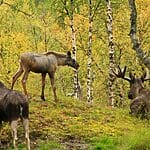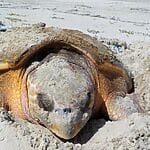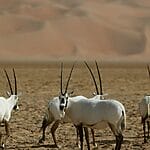12 Interesting Animals in New Hampshire – You Might Not Know
New Hampshire, a state rich in natural beauty, is home to a diverse array of interesting animals. From the majestic moose roaming the northern forests to the clever foxes found throughout the state, New Hampshire’s wildlife is as varied as its landscape.
Among the interesting animals in New Hampshire, bird enthusiasts can marvel at the sight of the bald eagle, a symbol of American wilderness, soaring over the state’s numerous lakes and rivers.
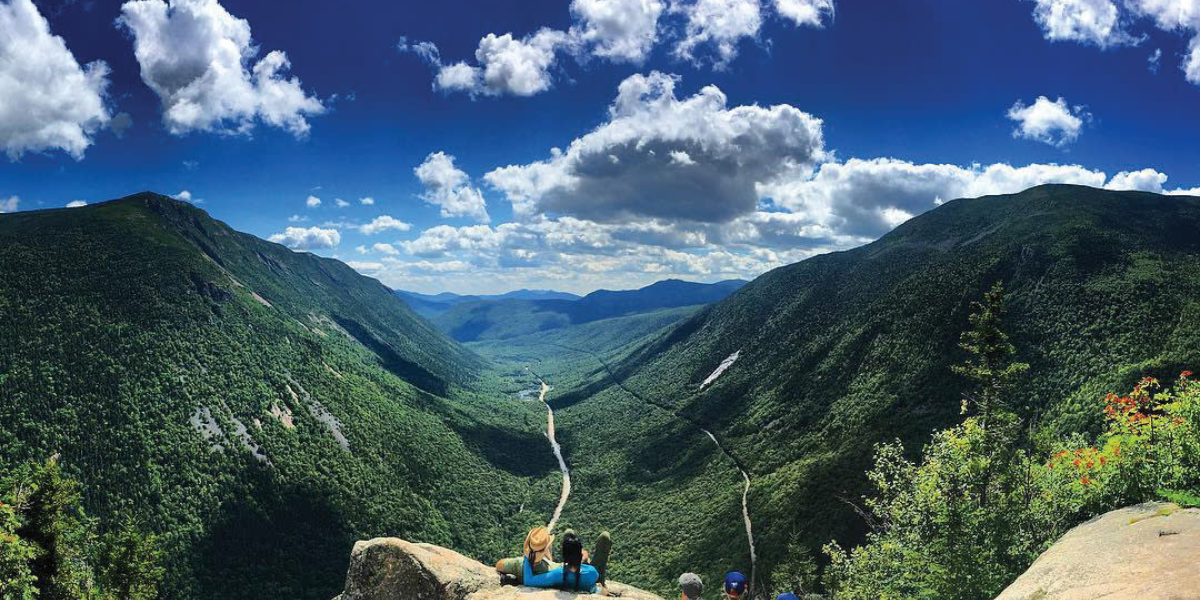
In the dense woodlands, black bears and white-tailed deer thrive, offering glimpses into the state’s thriving ecosystem. The state’s diverse habitats, including coastal areas, forests, and mountains, contribute to the richness of wildlife species found here.
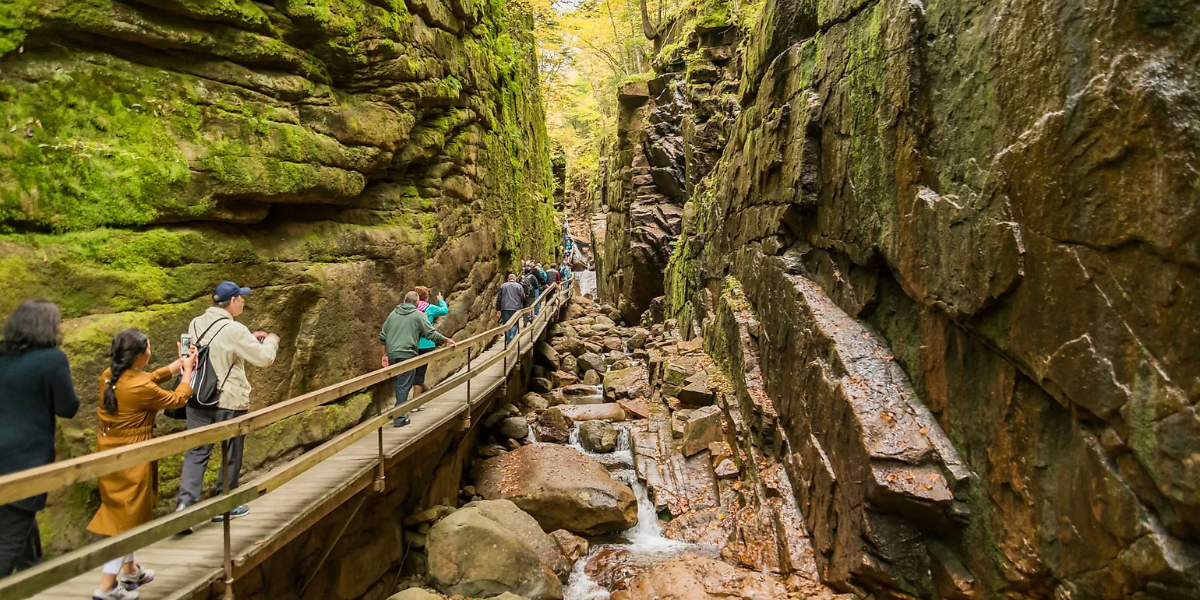
Additionally, the state also hosts a fascinating array of smaller creatures like the colorful New England cottontail and various amphibians that are essential to the ecological balance.
12 Interesting Animals in New Hampshire – (With Interesting Behavior & Pictures)
For nature lovers and wildlife enthusiasts, exploring the interesting animals in New Hampshire offers an insightful glimpse into the state’s natural heritage. Moreover, in this blog, we have gathered 12 interesting animals in New Hampshire that are thriving in various habitats.
Black Bears
The black bear is one of the interesting animals in New Hampshire. Black bears are particularly prevalent in deciduous, mixed forests, and coniferous forests, depending on the geographic location.
The lack bears are robust, with thick fur that ranges from black to dark brown and sometimes even cinnamon. They have a large body, small eyes, rounded ears, and a long snout.
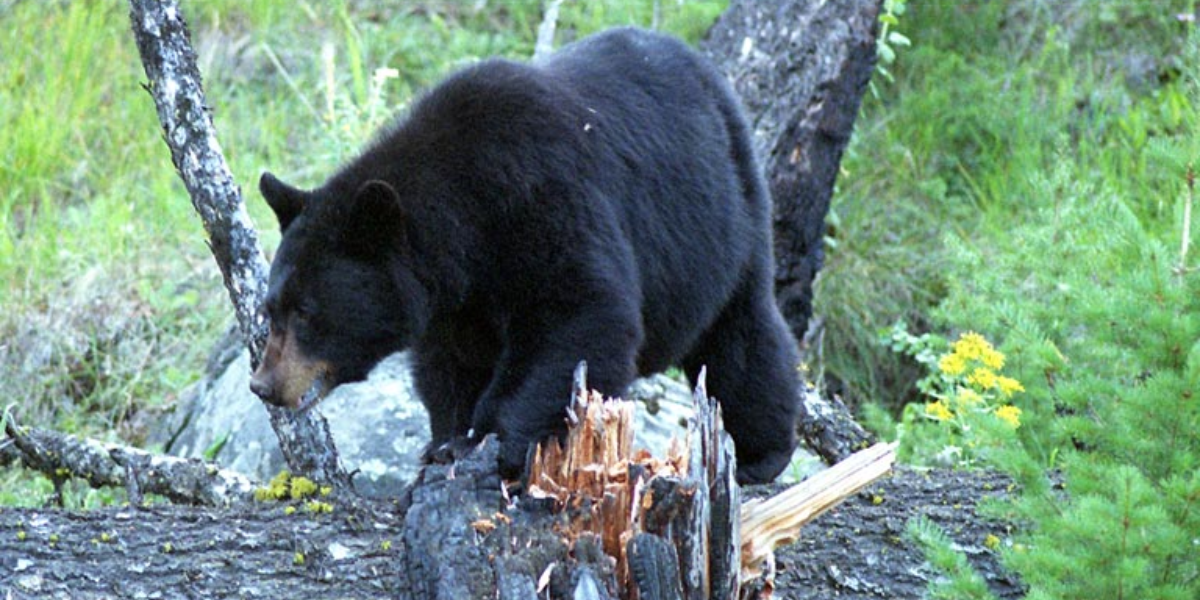
Adult bears typically weigh between 130-660 pounds, depending on their diet and habitat. Black bears are omnivores, and their diet includes berries, fruits, nuts, insects, small mammals, and carrion. They are also known to raid human food sources, which sometimes leads to conflicts.
How do black bears survive in winter? In colder months, they exhibit remarkable hibernation behavior. They retreat to dens – which could be a cave, hollow tree, or even a dug-out depression – and remain in a dormant state for several months.
During hibernation, they do not eat, drink, urinate, or defecate, surviving on their fat reserves accumulated during the active months.
Do you know In the hibernation period of a few months, they lose a quarter of their body weight.
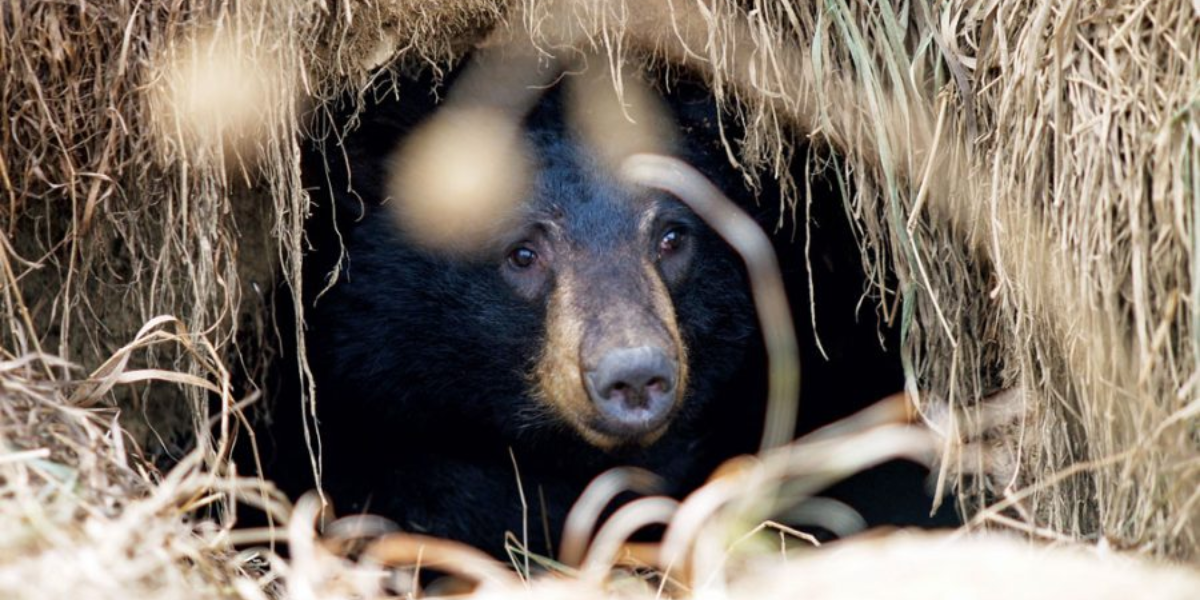
On the IUCN Red List, black bears are listed as “Least Concern,” which shows their stable population. Their adaptability to different habitats and ability to live in proximity to human developments contribute to their successful conservation status.
White Mountain Fritillary
The White Mountain Fritillary, one of the interesting animals in New Hampshire, is a butterfly species uniquely adapted to its alpine environment. The natural habitat of the White Mountain Fritillary includes alpine meadows, rocky slopes, and subalpine grasslands
It is distinguishable by its orange-brown wings adorned with black spots, creating a striking contrast that makes it easily identifiable against the greenery of its habitat.
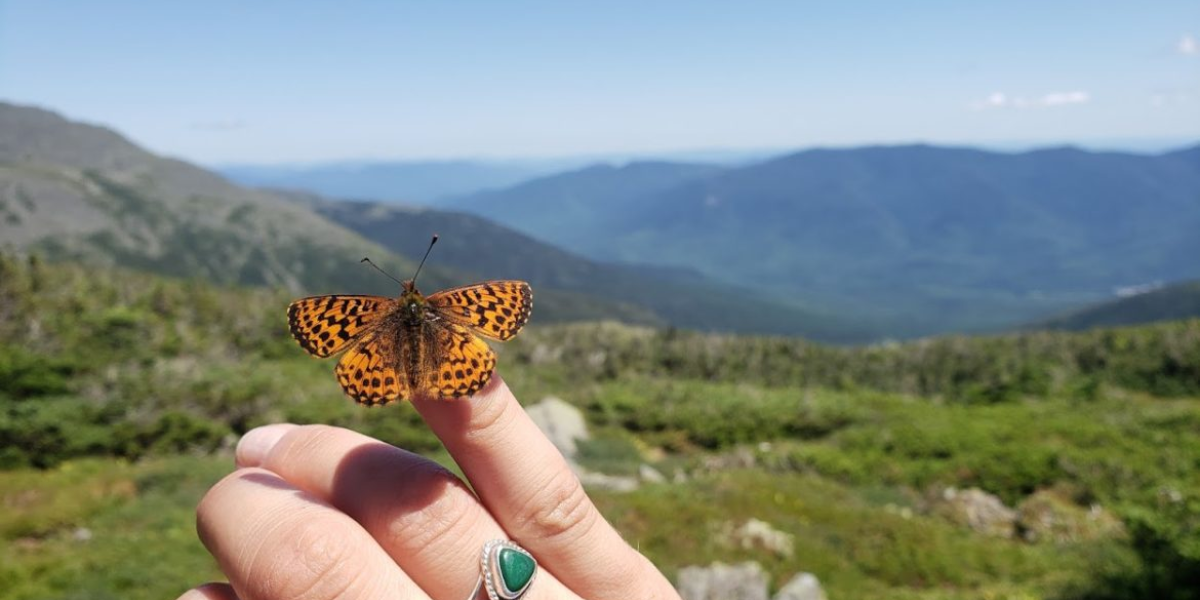
The underside of its wings exhibits a mottled pattern, blending seamlessly with the rocky terrain of the White Mountains. The White Mountain Fritillary primarily feeds on the nectar of alpine flowers, playing a crucial role in pollination.
This butterfly has an intriguing hibernation behavior; the larvae overwinter, surviving the harsh, cold conditions of the high-altitude climate.
Moreover, this adaptation is crucial for their survival and the continuation of their life cycle when spring arrives. Currently, the White Mountain Fritillary is not listed on the IUCN Red List of threatened species.
Canada Lynx
The Canada lynx, a captivating species among the interesting animals in New Hampshire, boasts a unique appearance well-adapted to its environment. They thrive in habitats characterized by dense coniferous or mixed woodlands, where its main prey, the snowshoe hare, is abundant.
Though it also feeds on rodents, birds, and occasionally deer, depending on availability. The Canada lynx are adapted to survive in snowy terrains. You can recognize the Canada lynx by its thick fur, tufted ears, and large paws.

Its fur color varies from silver-gray to brown, and provides excellent camouflage in the winter landscape, while its oversized paws act like natural snowshoes.
Additionally, the Canada lynx does not hibernate but remains active throughout the winter, using its exceptional hunting skills to survive in harsh conditions. On the IUCN red list of threatened species, the Canada lynx is listed as “Least Concern.”
Bobcats
Bobcats are interesting animals in New Hampshire and are known for their elusive nature. Their natural range encompasses diverse ecosystems, including forests, swamps, deserts, and grasslands
These medium-sized cats typically exhibit a coat that ranges from gray-brown to reddish-brown, marked with black spots and streaks, which provides excellent camouflage in their natural habitat.
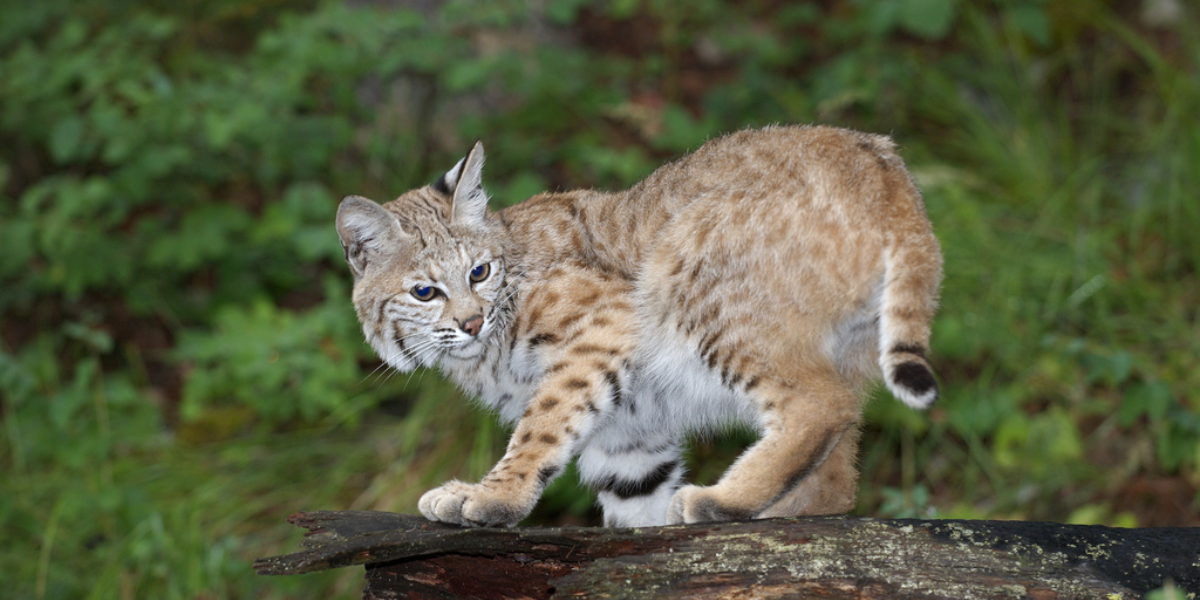
They have a short “bobbed” tail, from which they derive their name and tufted ears that enhance their keen hearing. Bobcats are carnivorous, primarily hunting rabbits, rodents, birds, and occasionally deer, showcasing their adaptability and skill as predators.
These wild cats do not hibernate during winter – they remain active, adapting their hunting strategies to the changing environment, however, they don’t like deep snow. On the conservation front, bobcats are listed as a species of “Least Concern” on the IUCN red list, reflecting a stable and healthy population of bobcats overall.
Northern Long-Eared Bat
The Northern Long-Eared Bat, is a fascinating species among the interesting animals in New Hampshire. These bats live in mature hardwood forests, particularly those with a mix of tree species. They are often associated with areas containing large old trees with loose bark, providing suitable roosting sites.
The northern long-eared bats are known for their distinctively long ears, which are nearly as long as half their body when stretched forward.
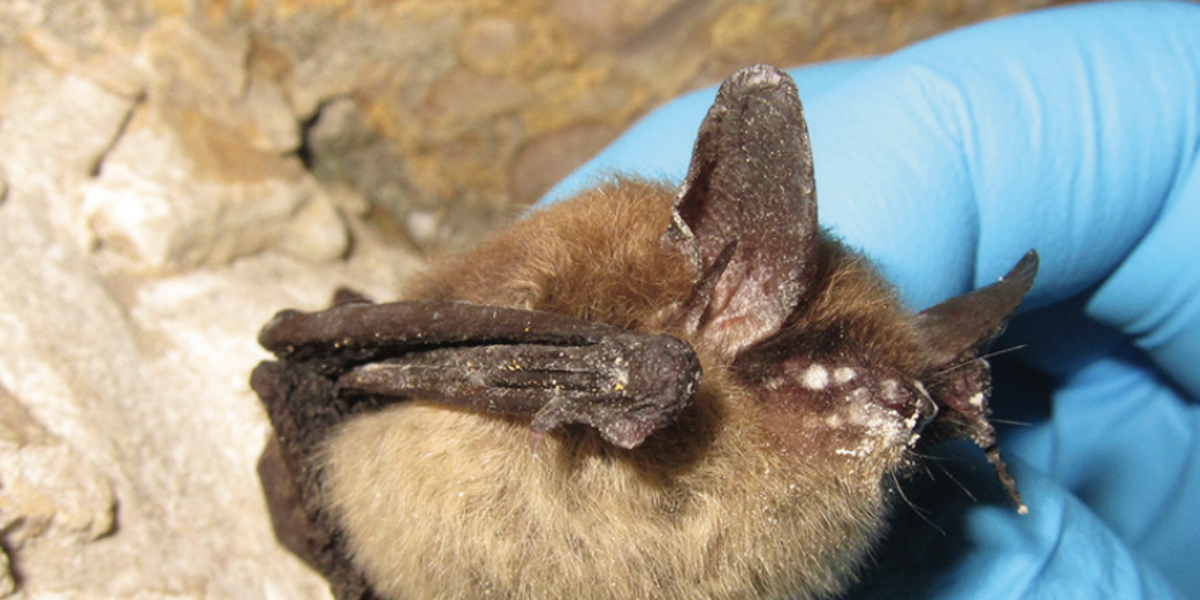
They possess a brown to blonde fur coat, with a wingspan ranging around 9 to 10 inches. These nocturnal mammals primarily feed on insects, including moths, flies, leafhoppers, and beetles, which they catch mid-flight using echolocation.
During winter, the Northern Long-Eared Bat engages in hibernation to survive the cold months. They often choose hibernacula-like caves and mines, where they can maintain stable, low temperatures crucial for their hibernation.
Sadly, this species faces significant threats, primarily from the fungal disease known as White-Nose Syndrome, which has drastically impacted their populations. Additionally, the International Union for Conservation of Nature (IUCN) has listed the Northern Long-Eared Bat as “Endangered animals” on the Red List of threatened species.
Gray Foxes
The Gray Fox, one of the interesting animals in New Hampshire, presents a distinctive appearance with a mix of gray, white, and rust-colored fur. These foxes feature a black stripe running along its back, ending in a bushy tail with a black tip.
Their natural range encompasses diverse landscapes, including forests, woodlands, grasslands, and deserts. This medium-sized canid typically weighs between 8 and 15 pounds and measures about 3 to 4 feet in length, including its tail.

Gray Foxes are omnivores, and their diet includes small mammals like rabbits, rodents, birds, insects, fruits, and vegetables. One unique aspect of their behavior is their ability to climb trees, a skill not common among canids.
They do not hibernate, instead, they remain active year-round, even in the cold winters of New Hampshire. Moreover, gray foxes adjust by growing thicker fur and relying on fat reserves accumulated during the fall.
The Gray Fox is listed as of “Least Concern” on the IUCN Red List. This status reflects a stable population, though they still face threats from habitat loss and human activities.
Groundhogs
Groundhogs, also known as woodchucks, are one of the interesting animals in New Hampshire. Their natural habitat includes a variety of environments, ranging from open fields and meadows to woodland edges, grassy areas, and even suburban landscapes.
They have a stocky, robust build, with short, powerful limbs ideal for digging. Their fur is typically brownish-gray, offering camouflage in their natural surroundings.
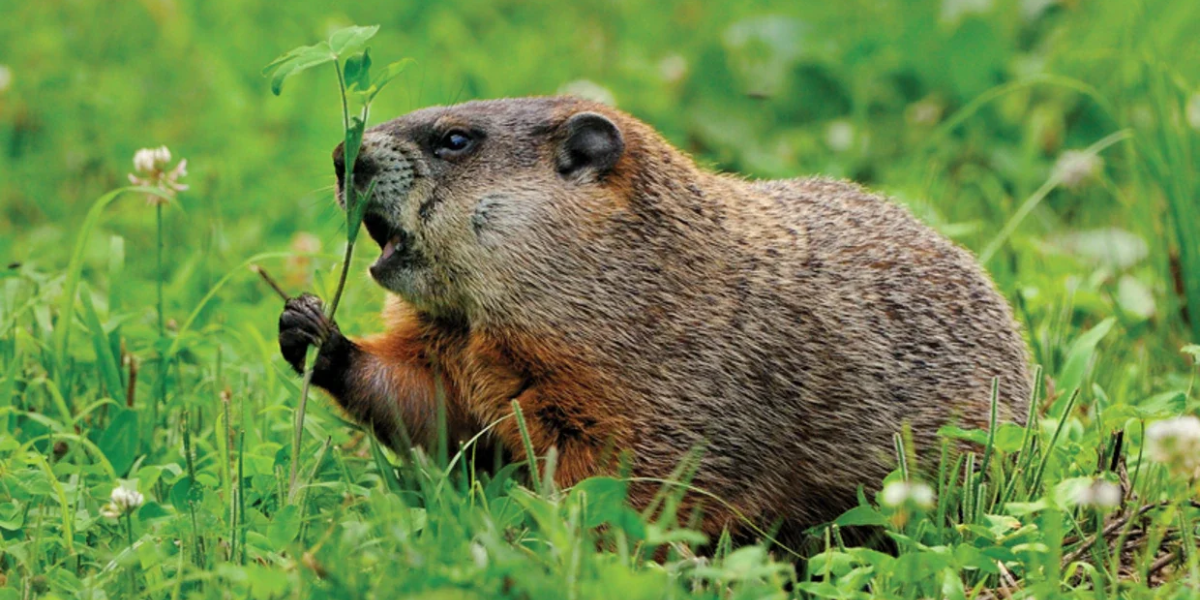
These rodents have a broad, flat head, small ears, and large incisors which are vital for their herbivorous diet. Groundhogs primarily feed on grasses, fruits, and vegetables, occasionally enjoying insects and snails.
A unique aspect of their behavior is hibernation. As winter approaches, groundhogs enter a state of deep sleep in burrows they’ve meticulously prepared. This hibernation, characterized by a significant drop in body temperature and slowed metabolism, helps them conserve energy during the cold months when food is scarce.
On the IUCN Red List, groundhogs are listed as “Least Concern,” indicating a stable population. Their adaptability to different environments, including suburban areas, contributes to their steady numbers.
Do you know the hibernation period of groundhogs ends in late winter or early spring?
Moose
Moose, among the most interesting animals in New Hampshire, are renowned for their imposing stature and distinctive features. Their natural habitat includes a combination of mature and young trees, which provides them plenty of food.

Moose is the largest member of the deer family, a possess a long, bulbous nose, a ‘bell’ or dewlap under the throat, and in males, magnificent antlers can span over six feet. Their fur ranges from brown to black, providing excellent insulation against harsh winters.
Moose are herbivores, feeding on a variety of vegetation, including leaves, bark, pine cones, and aquatic plants. Their long legs and powerful bodies are well-adapted for foraging in deep snow and swimming in search of food.
In winter season, they migrate to areas with less snow to find accessible food. Currently, the IUCN Red List classifies moose as “Least Concern,” indicating a stable population on a global scale
The Wood Frogs
The Wood Frog, a remarkable amphibian, is among the interesting animals in New Hampshire. They inhabit various environments such as forested areas, wetlands, and wooded swamps.
This frog has a distinctive appearance with a brown, tan, or rust-colored back, and a dark mask-like line across its eyes. Its underbelly is usually a lighter color, providing some camouflage in its natural habitat.
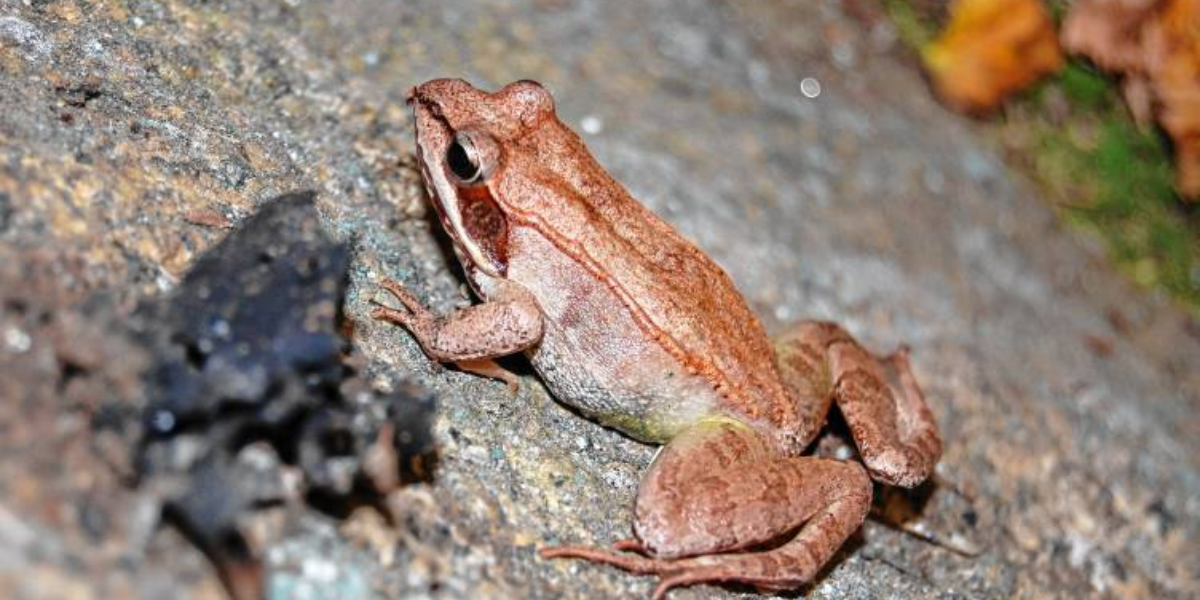
Wood Frogs have a varied diet, and mainly feed on small invertebrates like insects, spiders, worms, etc. Their hunting strategy involves sitting and waiting for prey to come within range before quickly capturing it with their sticky tongue.
They are one of the few amphibians capable of surviving freezing temperatures. They hibernate under leaf litter or logs, and their bodies can freeze solid in winter.
This adaptation is possible due to the production of glucose in their liver, which acts as a natural antifreeze, protecting their cells from damage.
The conservation status of Wood Frogs is listed as “Least Concern” on the IUCN Red List. Their ability to thrive in a variety of habitats, including the forests and wetlands of New Hampshire, contributes to their stable population.
New England Cottontail
The New England Cottontail, a charming and elusive mammal, stands out among the interesting animals in New Hampshire. This rabbit species is typically found in young, regenerating forests, thickets, and shrublands.
This species, distinct from its more widespread relative, the Eastern Cottontail, is smaller and has a denser, grayish-brown coat.
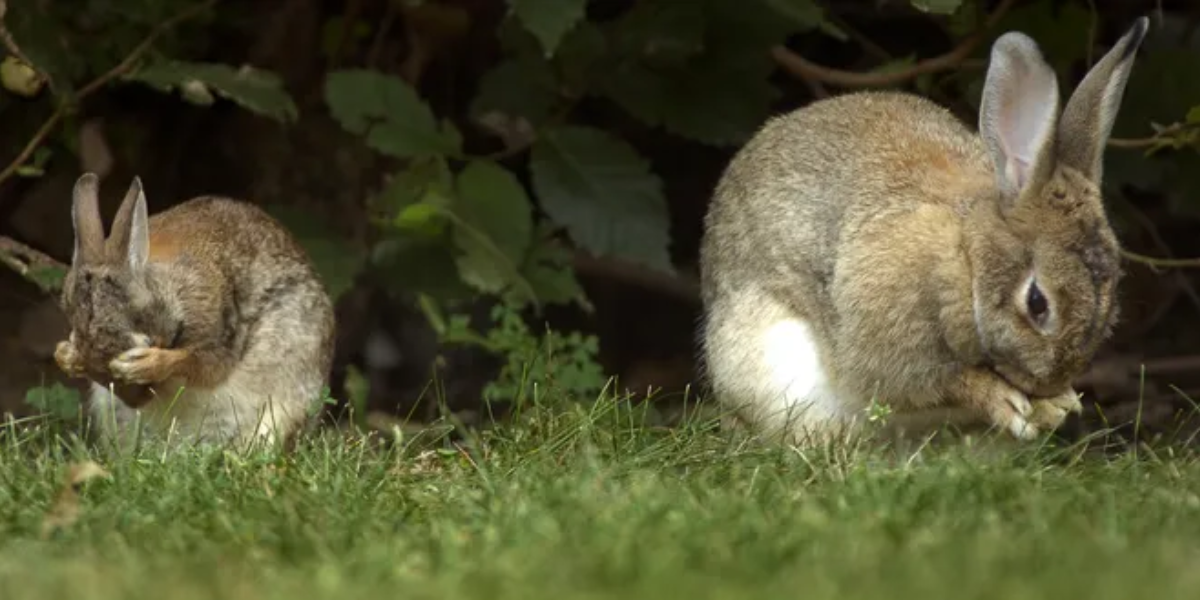
They have white fur on the underside of the tail. It’s distinguished by its shorter ears and the black spot between them. The New England Cottontail primarily feeds on grasses, herbs, and young shoots, especially in summer. In winter, they adapt to eating twigs, bark, and buds.
Additionally, they do not hibernate but remain active throughout the year, even in the harsh winters. Cottontails create runways through the snow to access food and shelter.
The New England Cottontail is listed as “Endangered Animals” on the IUCN Red List. Their numbers have declined due to habitat loss and fragmentation, as well as competition with the Eastern Cottontail.
Conservation efforts in New Hampshire and other northeastern states focus on habitat restoration and protection to ensure the survival of this unique species.
Bird Species in New Hampshire
New Hampshire boasts a diverse array of bird species, contributing to the state’s vibrant avian biodiversity. From the iconic common loon, often seen on the state’s lakes and ponds, to the regal bald eagle soaring overhead, the birdlife in New Hampshire is both varied and captivating.
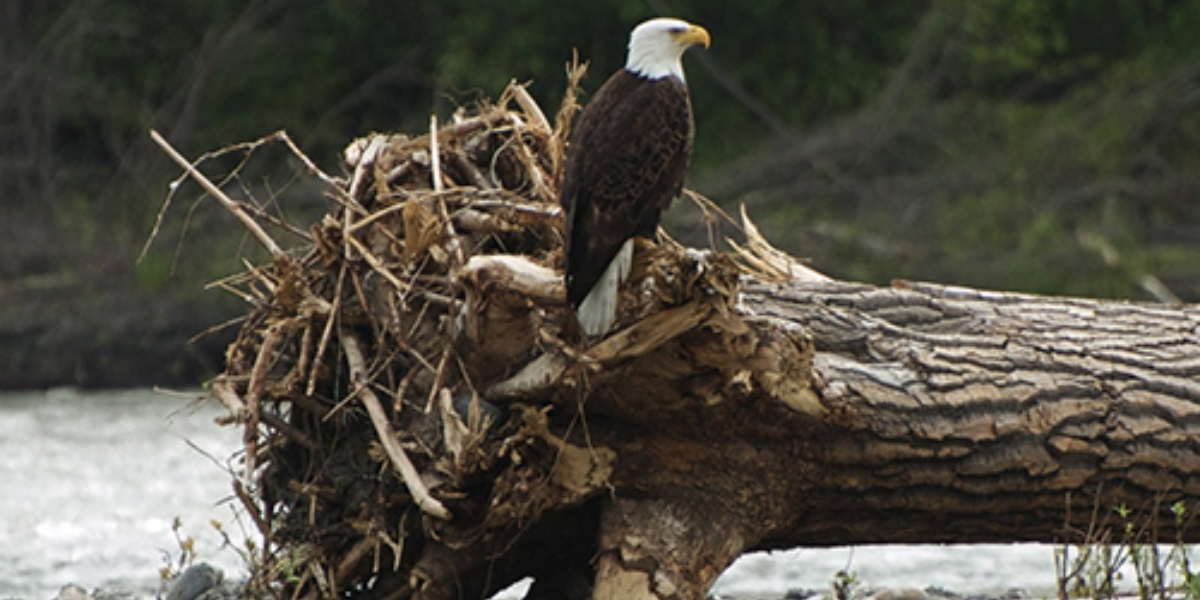
Songbirds such as the eastern bluebird and American goldfinch add bursts of color to the landscapes, while raptors like the red-tailed hawk and peregrine falcon demonstrate the wild majesty of the state’s skies. The Great North Woods provides a haven for boreal species like the spruce grouse, and coastal areas attract shorebirds and seabirds.

Birdwatchers and nature enthusiasts can explore the state’s diverse habitats, including forests, wetlands, and coastal areas, to observe the fascinating behaviors and migrations of the numerous bird species that call New Hampshire home.
Bald Eagles
The Bald Eagle, a magnificent and interesting animal in New Hampshire, is renowned for its striking appearance and regal bearing. They are commonly found near large bodies of open water, such as lakes, rivers, coastal areas, and marshes, where they can find an abundant supply of fish, a primary component of their diet.
Adult Bald Eagles are easily recognizable by their white head and tail contrasting sharply against a dark brown body and wings.
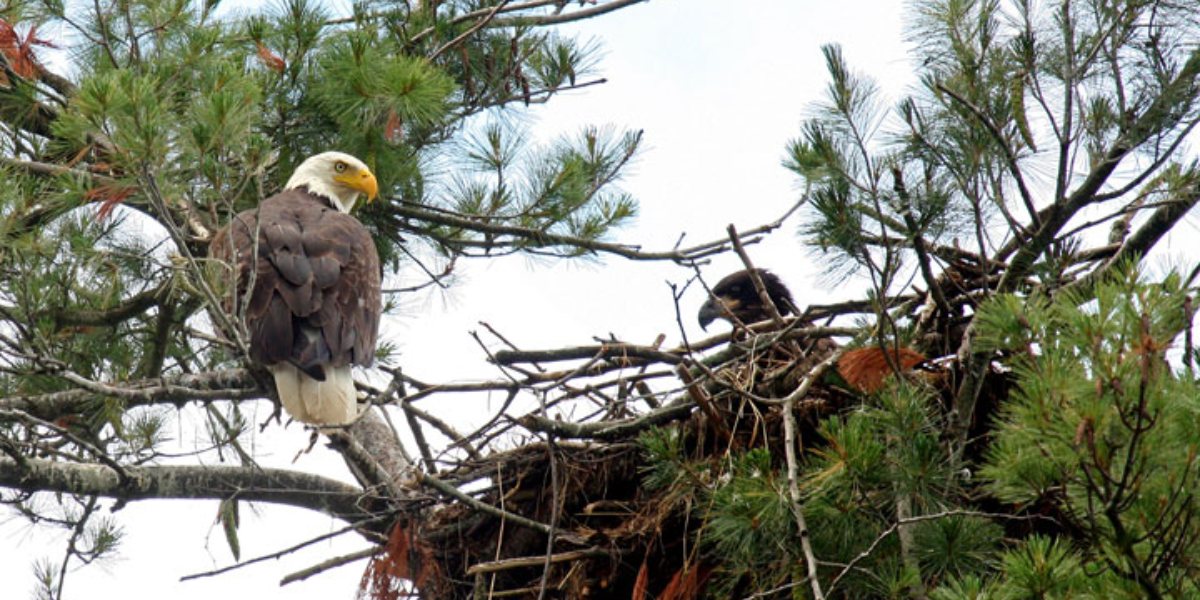
They have captivating hooked yellow beaks and large, piercing eyes. Additionally, their diet primarily consists of fish, which they skillfully snatch from water bodies using their powerful talons. These birds are also known to scavenge and occasionally prey on small mammals and birds.
Bald Eagles do not hibernate; they remain active throughout the year, adapting to the changing seasons. The IUCN Red List classified them as “Least Concern,” reflecting a stable and thriving population of Bald eagles.
Official Animal of Hampshire – White-tailed Deer
The White-tailed Deer is the official animal of New Hampshire. These graceful mammals are found in a variety of habitats, from dense forests to open fields and edges of habitat (means more plant diversity).
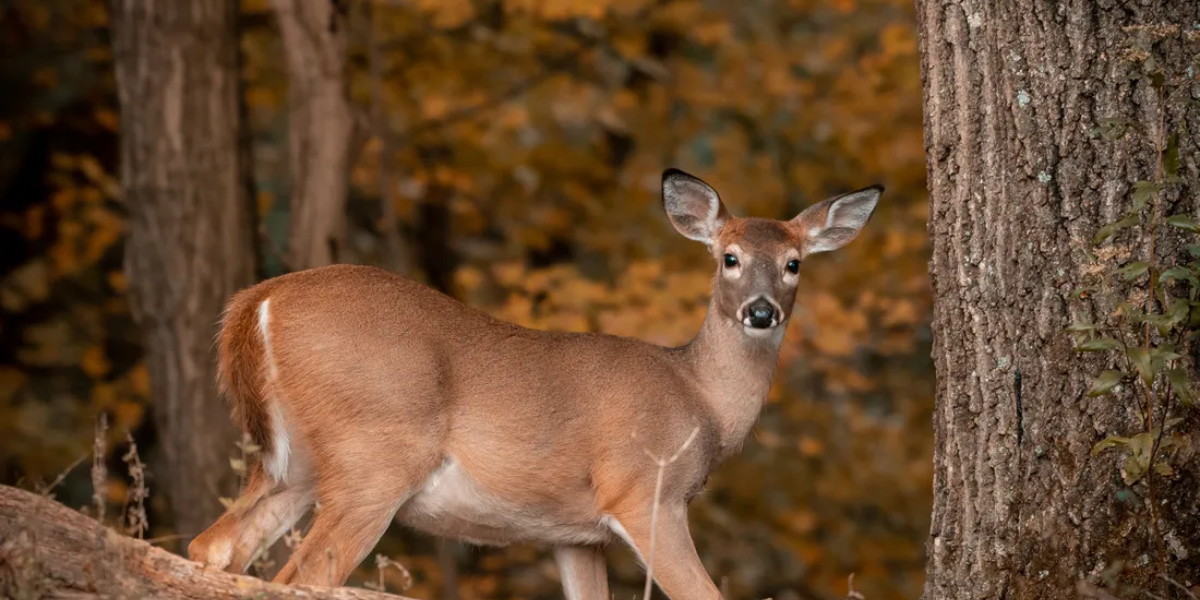
White-tailed deer are herbivores with a diverse diet, consuming grasses, leaves, twigs, and fruits. Their ability to thrive in different ecosystems is a testament to their versatility. Despite being an iconic species, white-tailed deer are not evaluated individually on the IUCN Red List.
Frequently Asked Questions about Interesting Animals in New Hampshire
What animals is New Hampshire known for?
Some of the iconic and interesting animals associated with New Hampshire include White-tailed Deer, American black bear, and Bobcat.
What is the largest animal in New Hampshire?
The moose is the largest animal in New Hampshire.
What’s New Hampshire’s state animal?
The white-tail deer is the state animal of New Hampshire.
What is the state bird for New Hampshire?
The purple finch is the state bird of New Hampshire.
- 12 Interesting Animals in Dominican Republic - 2024-05-02
- 8 Common Dangerous Animals in Yosemite - 2024-05-01
- 11 Interesting Animals in the Midwest - 2024-05-01


